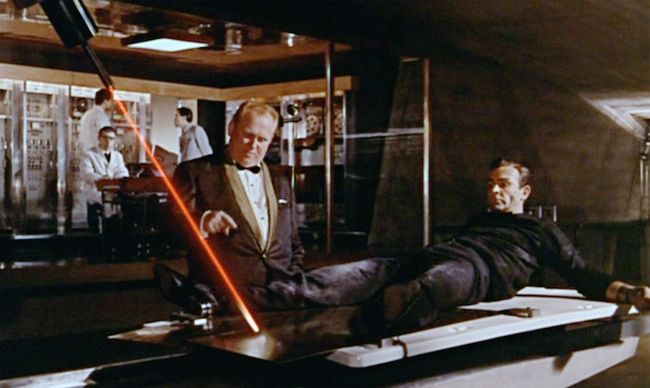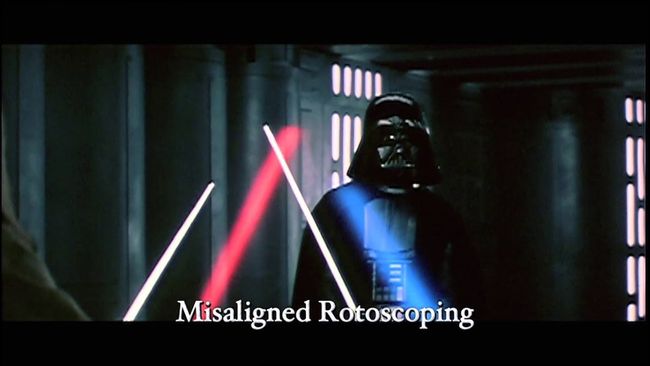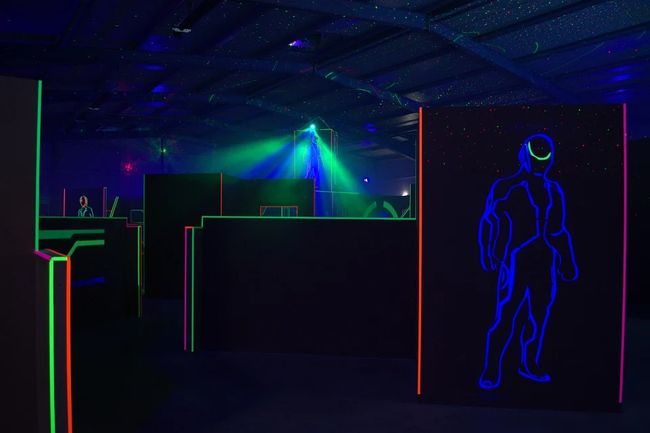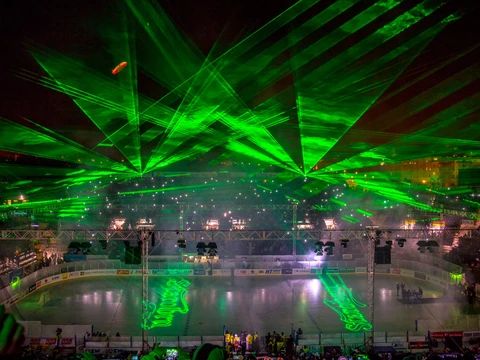Sixty years ago this month, Theodore H. Maiman, a physicist at Hughes Research Laboratories in Malibu, Calif., constructed the first laser using a cylinder of synthetic ruby and photographic flash lamps. There have been many milestones in the last six decades. In honor of this breakthrough, Photonics Media will be running periodic coverage throughout the month.
PITTSFIELD, Mass., May 29, 2020 — As the world celebrates the 60th anniversary of the laser, Photonics Media takes a look back at how the technology has been displayed in popular culture over the last 60 years. Some might be surprised that the first reference to a direct-energy weapon came much earlier, in 1897.

H.G. Wells wrote of the Martians in his novel The War of the Worlds:
“In some way they are able to generate an intense heat in a chamber of practically absolute non-conductivity. This intense heat they project in a parallel beam against any object they choose, by means of a polished parabolic mirror of unknown composition, much as the parabolic mirror of a lighthouse projects a beam of light ... it is certain that a beam of heat is the essence of the matter.”
Since the laser was first demonstrated in 1960, several representations of the technology have made its way into Hollywood adaptations and modern culture. Following is a list of examples compiled through the decades.
1960s
James Bond: Goldfinger
A few years after Maiman’s ruby laser, James Bond was facing peril at the hands of gold smuggler Goldfinger, and his laser weapon. According to the crew that worked on the set, director Guy Hamilton bought an actual ruby laser, but as soon as the studio lights were turned on the light disappeared. To compensate, the effects team burned a welder’s torch underneath the table, and added the color of the ruby laser back in during postproduction.
Press materials put out before the film’s premiere played up the scene and its use of the technology. Goldfinger “is sure to give the laser its greatest international publicity as a scientific development of great power and worth in the modern world,” the press release said.

Auric Goldfinger (Gert Fröbe, left) looks on as James Bond (Sean Connery, right) stares down an industrial cutting laser. Courtesy of MGM/UA.
1970s
Star Wars
In the 1970s, lasers were off to a hot start, spurred on by the invention of the titanium sapphire laser. However, arguably the most popular laser appearance in cinematic history, Star Wars, didn’t capitalize on any of the laser developments. Instead, the filmmakers relied on rotoscoping, a technique where an animation is created on top of live footage, either with the intention to replace it entirely or to integrate it into the original shot.

Laser animations were added to the lightsabers and other laser weapons in Star Wars using a technique called rotoscoping. Courtesy of LucasFilms and 20th Century Fox.
1980s
Laser Tag
While Star Wars didn’t use any actual lasers, it did inspire George Carter III, the inventor of Laser Tag. Carter happened upon the idea in 1977 after watching the first Star Wars movie. However, his vision was not realized until 1984 when Photon, the first arena-based Laser Tag facility, was set up in Dallas, Texas. The technology, known as MILES (Multiple Integrated Laser Engagement System), was delayed due to it still being under development by the U.S. military and not yet fully commercialized.

Laser Tag was invented by George Carter III after he was inspired by the lasers in Star Wars. Courtesy of Shutterstock.
1990s
Austin Powers
This entry could fit in the ’90s or 2000s, as Dr. Evil’s vision for “sharks with frickin’ laser beams” in the first installment of the series wasn’t fully realized until the final Austin Powers movie, Goldmember (fittingly, as the movie is a parody of Goldfinger).

SPIE celebrates the laser’s 60th anniversary with T-shirts honoring the Austin Powers trilogy. Courtesy of SPIE.
2000s
Sporting events
With the advancement of laser technology comes an arms race in entertainment, and as lasers make their way into sporting events the technology has seen ever-increasing usage.

Stock image of laser show in a hockey arena.